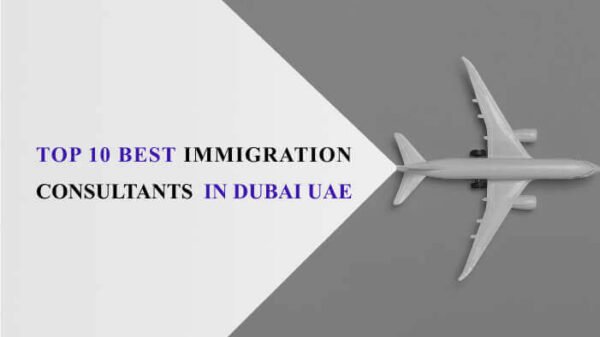Human resource management (HRM) practices play a critical role in the success of every organization. HRM practices refer to the policies, procedures, and processes organizations use to manage their employees effectively.
Effective HRM practices can help businesses achieve their goals, enhance employee productivity and engagement, and create a positive work environment. In this article, we will explore some of the best human resource managment practices that organizations can implement to improve their employee management strategies.
8 Best Human Resource Management Practices
Here is the list:
Recruitment and Selection
Recruitment and selection are critical HRM practices that involve attracting and hiring qualified candidates to fill vacant positions in the organization. To implement effective recruitment and selection practices, organizations should:
- Define job requirements and expectations clearly to attract the right candidates.
- Utilize various recruitment channels such as social media, job boards, and employee referrals to reach a diverse pool of candidates.
- Use pre-employment tests, behavioral interviews, and reference checks to assess candidates’ skills, knowledge, and fit for the organization.
- Communicate the organization’s values, culture, and opportunities for growth and development to attract top talent.
Training and Development
Training and development are critical HRM practices that equip employees with the skills, knowledge, and tools to perform their jobs effectively. To implement effective training and development practices, organizations should:
- Develop a comprehensive training program, including on-the-job, classroom, and online training.
- Use various training techniques such as coaching, mentoring, and job shadowing to enhance employee learning.
- Incorporate performance feedback into the training program to help employees identify areas for improvement and enhance their performance.
- Provide opportunities for employee development, such as job rotation, cross-functional projects, and skill-building workshops.
Performance Management
Performance management is a critical HRM practice that involves monitoring, measuring, and evaluating employee performance against predetermined goals and objectives. To implement effective performance management practices, organizations should leverage technology solutions such as performance management software.
- Set clear and measurable performance goals that align with the organization’s objectives.
- Provide regular performance feedback to employees, highlighting their strengths and areas for improvement.
- Use objective measures such as key performance indicators (KPIs) and balanced scorecards to evaluate employee performance.
- Provide performance-based rewards such as bonuses, promotions, and recognition to motivate employees to achieve their performance goals.
Compensation and Benefits
Compensation and benefits are essential HRM practices determining employee salaries, bonuses, and benefits packages. To implement effective compensation and benefits practices, organizations should:
- Conduct regular salary surveys to ensure that employee salaries are competitive with the market.
- Develop a comprehensive benefits package that includes health insurance, retirement plans, and other benefits such as paid time off and flexible work arrangements.
- Use performance-based pay and bonuses to reward top performers and motivate employees to achieve their goals.
- Provide career growth and development opportunities, such as promotions and internal transfers.
Employee Relations
Employee relations are critical HRM practices that involve managing employee-employer relationships and resolving conflicts and disputes. To implement effective employee relations practices, organizations should:
- Develop policies and procedures that promote a positive work environment, such as anti-harassment and anti-discrimination policies.
- Foster open communication between employees and managers, providing opportunities for feedback and suggestions.
- Implement conflict resolution strategies such as mediation and arbitration to resolve workplace disputes.
- Promote employee engagement by providing opportunities for social interaction and team building.
Diversity and Inclusion
Diversity and inclusion are critical HRM practices that involve creating a work environment that respects and values differences in race, gender, ethnicity, and other personal characteristics. To implement effective diversity and inclusion practices, organizations should:
- Develop policies and procedures that promote diversity and inclusion, such as affirmative action and equal employment opportunity policies.
- Provide training and education to employees and managers on diversity and inclusion.
- Create employee resource groups and affinity groups to support diverse employees and foster a sense of community.
- Conduct regular diversity audits and assessments to identify areas for improvement and track progress over time.
Workforce Planning
Workforce planning is a critical HRM practice that involves forecasting future staffing needs and developing strategies to meet those needs. To implement effective workforce planning practices, organizations should:
- Analyze business trends and projections to determine future staffing needs.
- Develop a talent pipeline by identifying and nurturing potential candidates for future positions.
- Implement succession planning to ensure the organization has a plan for key leadership positions.
- Data analytics and workforce metrics are used to monitor and adjust workforce planning strategies.
Work-Life Balance
Work-life balance is an essential HRM practice that involves creating a work environment that supports employees’ personal and professional goals. To implement effective work-life balance practices, organizations should:
- Offer flexible work arrangements such as telecommuting, job sharing, and flexible schedules.
- Provide employee assistance programs and other resources to support employees’ mental and physical health.
- Encourage employees to take time off and use vacation to recharge and rejuvenate.
- Create a culture that values work-life balance and promotes a healthy work-life balance for all employees.
Conclusion
In this post, we have discussed the best human resource managment practices. If you have any questions, contact us without any hesitation.
Also read: The Ultimate List of Unblocked Games 67




























































